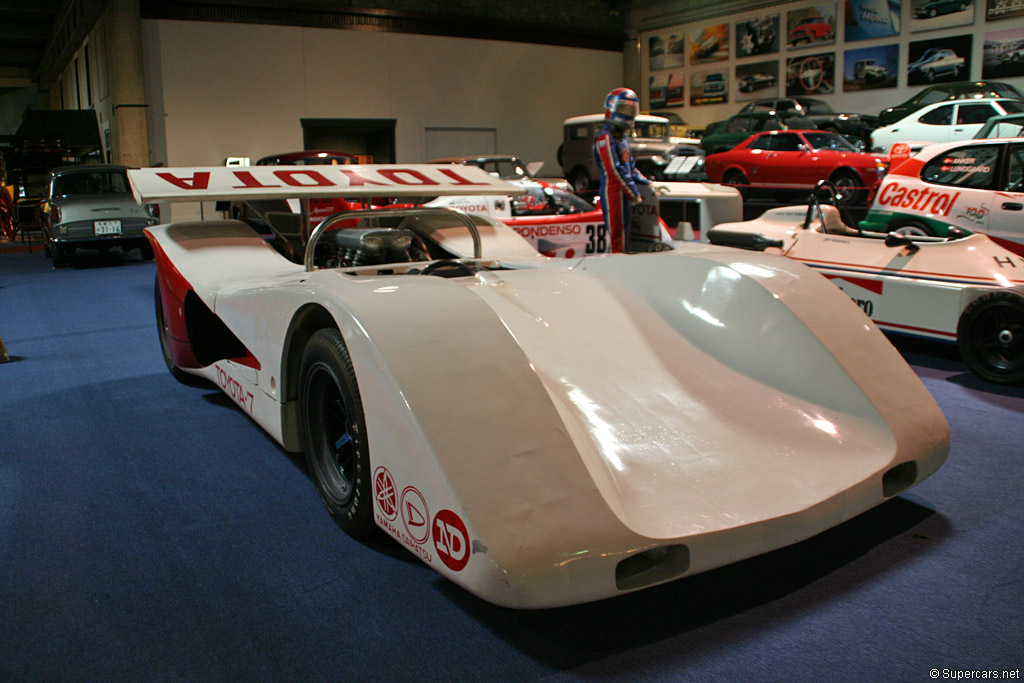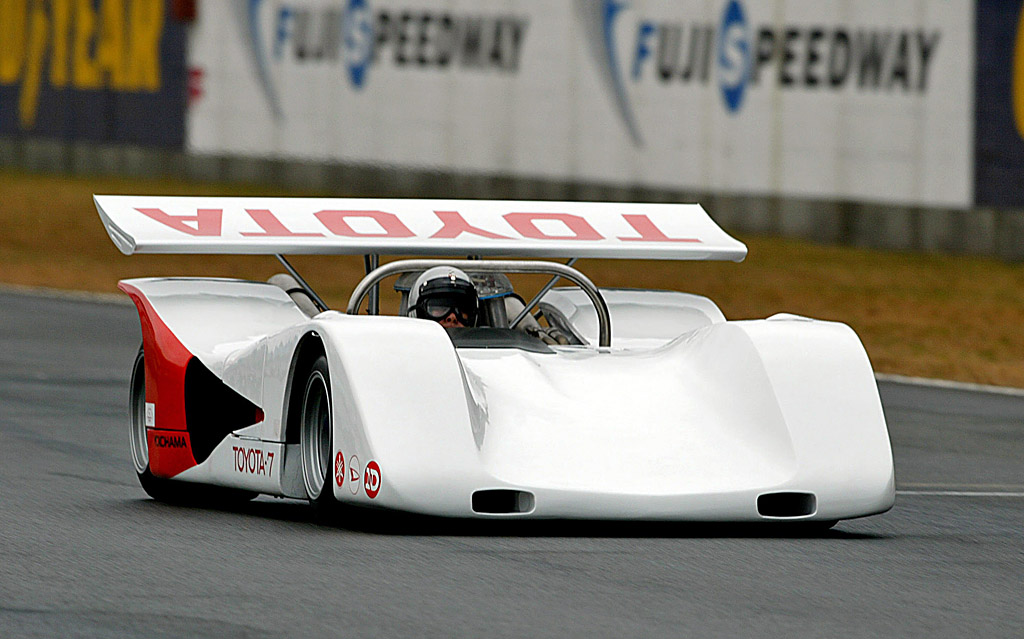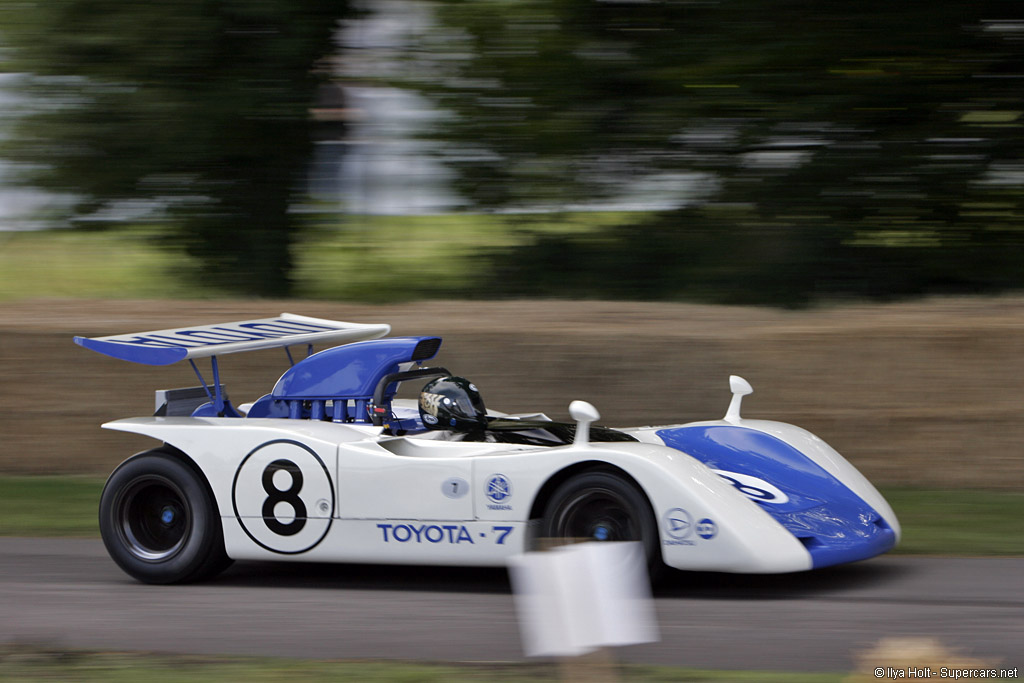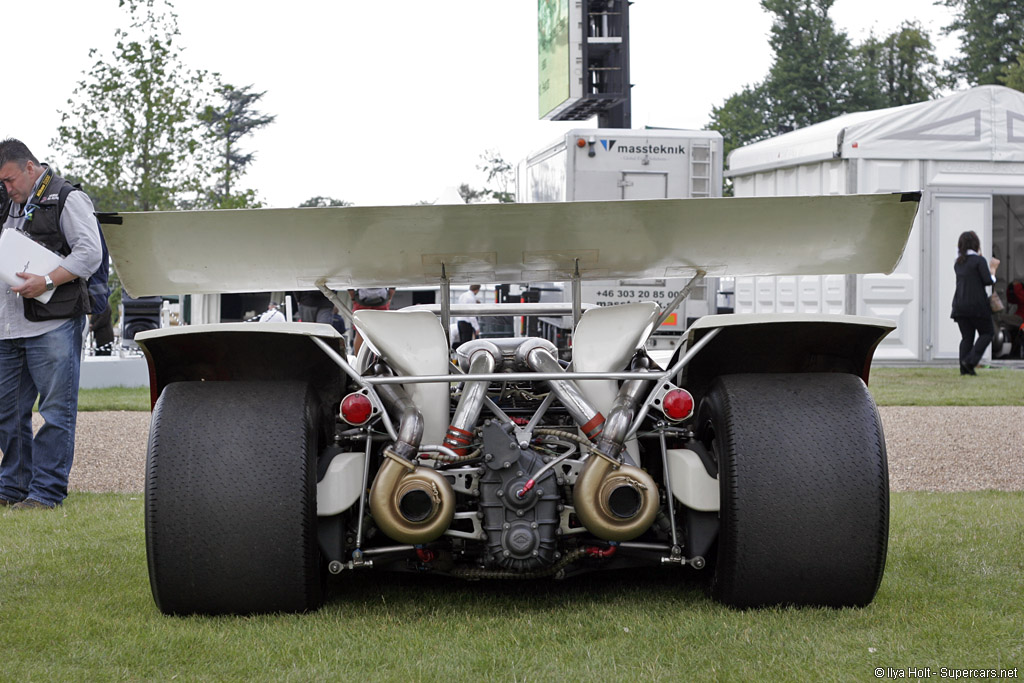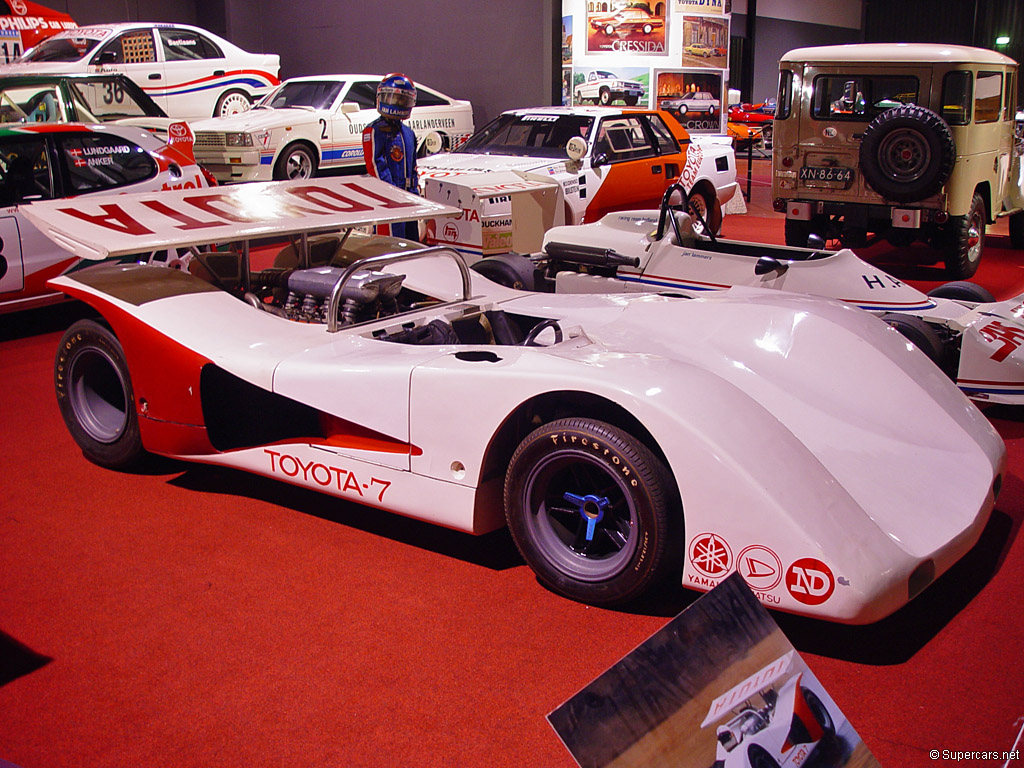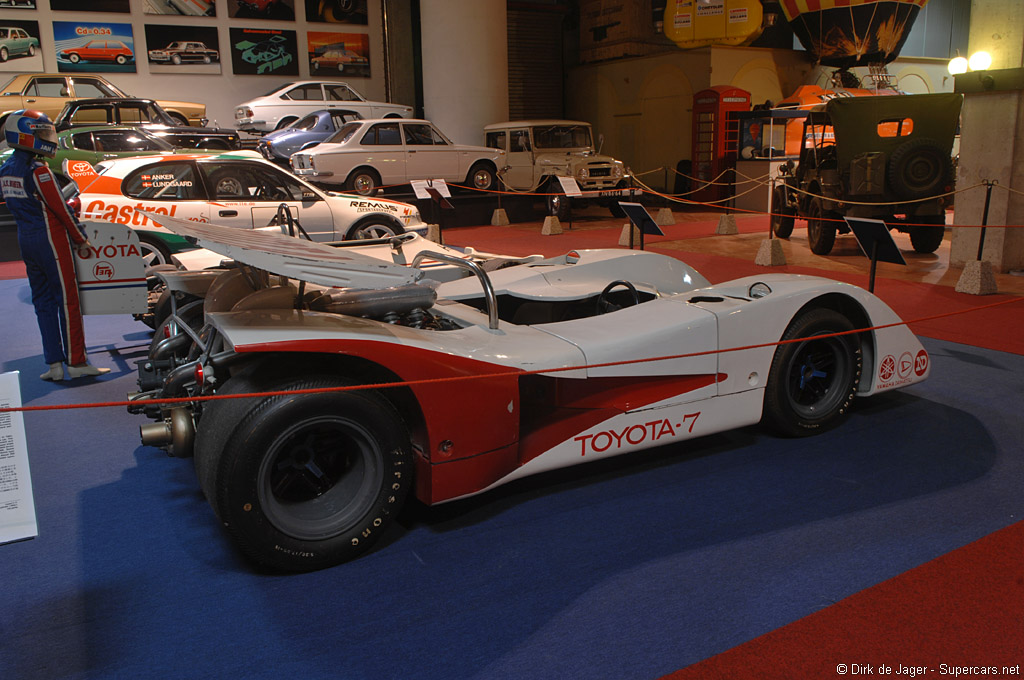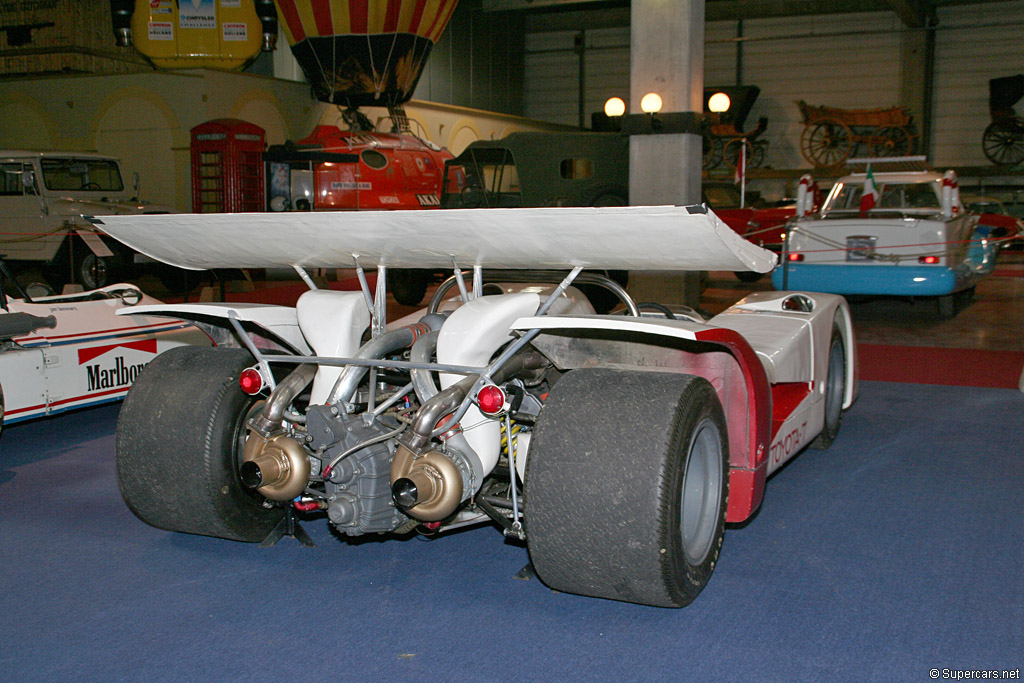1969 Toyota 7
The Toyota 7 marked a significant advance in Toyota’s motor sport programme, being its first thoroughbred race car, designed and developed purely for competition purposes. It was encouraged in its efforts by the growing popularity of motor sport in Japan, with new circuits and race series attracting huge crowds.
The open cockpit, two-seater was conceived to compete in the Japanese Grand Prix, running under the FIA’s Group 7 regulations for international sports car racing. The original model was penned by Jiro Kawano, the man behind the Toyota GT, but development and construction were entrusted to Yamaha. The design was typical of its time, with the main cockpit structure comprising aluminium side sills and scuttles, with glass fibre body panels.
The prototype 7 first tested at Suzuka in February 1968, running with the DOHC fuel-injected, six-cylinder, 2.0-litre engine that had previously powered the 2000GT. But by the time the car lined up for its first race at the grand prix in March, it had gained an all-alloy DOHC 3.0-litre V8 unit.
In 1969, the engine was upgraded to five-litre capacity and the 7 duly gained its maiden win at the All Japan Fuji 1,000km in July, the start of an impressive run of victories.
With an eye to moving its sporting campaign on to an international level in the North American Can-Am series, Toyota began development of a twin-turbocharged version of the 7, developing 800bhp but weighing just 620kg. The car was completed and undertook a series of demonstration drives, but it was fated never to race. In 1970, Japanese motor sport’s governing body, the JAF, changed the rules for the Japan Grand Prix, making it impractical for Toyota to continue with the 7 project.
For many years the 7 sat on a podium in the Toyota Automobile Museum, until a team of dedicated road car engineers, led by Kazufume Toriya, made it their mission to put the race car back in action. The car was rebuilt in 2001 as part of a Toyota project designed to help its engineers appreciate the company’s motor sport heritage and it made its public debut at the 2002 Goodwood Festival of Speed.
Story by Toyota
In Detail
| tags | group7 |
| submitted by | Richard Owen |
| engine | 90 Degree V8 |
| displacement | 4968 cc / 303.2 in³ |
| power | 447.4 kw / 600 bhp @ 7800 rpm |
| specific output | 120.77 bhp per litre |
| bhp/weight | 967.74 bhp per tonne |
| body / frame | Body over Tubular Aluminum Spaceframe |
| front tires | Firestone Indy |
| rear tires | Firestone Indy |
| front brakes | Toyota V-Disc |
| rear brakes | Toyota V-Disc |
| f suspension | Wishbones |
| r suspension | 4-Link |
| curb weight | 620 kg / 1367 lbs |
| wheelbase | 2350 mm / 92.5 in |
| length | 3750 mm / 147.6 in |
| width | 2040 mm / 80.3 in |
| height | 840 mm / 33.1 in |
| transmission | Aisin 5-speed |





